Jeep Compass vs Peugeot 408 – Differences & prices compared
Both models have their strengths – but which one suits you more?
Compare performance, efficiency, price and space directly: Jeep Compass or Peugeot 408?
Here’s where it gets real: The technical differences in detail
Costs and Efficiency: Price and efficiency are key factors when choosing a car – and this is often where the real differences emerge.
Jeep Compass has a minimal advantage in terms of price – it starts at 34200 £, while the Peugeot 408 costs 35100 £. That’s a price difference of around 917 £.
Fuel consumption also shows a difference: the Peugeot 408 manages with 0.90 L and is therefore clearly more efficient than the Jeep Compass with 2 L. The difference is about 1.10 L per 100 km.
In terms of energy consumption, the advantage goes to the Peugeot 408: with 15.10 kWh per 100 km, it’s a bit more efficient than the Jeep Compass with 17.50 kWh. That’s a difference of about 2.40 kWh.
As for range, the Jeep Compass performs minimal better – achieving up to 500 km, about 47 km more than the Peugeot 408.
Engine and Performance: Power, torque and acceleration are the classic benchmarks for car enthusiasts – and here, some clear differences start to show.
When it comes to engine power, the Jeep Compass has a slight edge – offering 240 HP compared to 225 HP. That’s roughly 15 HP more horsepower.
In acceleration from 0 to 100 km/h, the Peugeot 408 is hardly perceptible quicker – completing the sprint in 7.20 s, while the Jeep Compass takes 7.30 s. That’s about 0.10 s faster.
In terms of top speed, the Peugeot 408 performs slightly better – reaching 233 km/h, while the Jeep Compass tops out at 200 km/h. The difference is around 33 km/h.
There’s also a difference in torque: the Peugeot 408 pulls minimal stronger with 360 Nm compared to 345 Nm. That’s about 15 Nm difference.
Space and Everyday Use: Cabin size, boot volume and payload all play a role in everyday practicality. Here, comfort and flexibility make the difference.
Both vehicles offer seating for 5 people.
In curb weight, the Peugeot 408 is slight lighter – 1544 kg compared to 1575 kg. The difference is around 31 kg.
In terms of boot space, the Jeep Compass offers minimal more room – 550 L compared to 536 L. That’s a difference of about 14 L.
In maximum load capacity, the Peugeot 408 performs slightly better – up to 1583 L, which is about 196 L more than the Jeep Compass.
When it comes to payload, Jeep Compass barely noticeable takes the win – 470 kg compared to 456 kg. That’s a difference of about 14 kg.
All in all, the Peugeot 408 shows itself to be leaves the rival little chance and secures the title of DriveDuel Champion.
It impresses with the more balanced overall package and proves to be the more versatile companion for everyday use.
Jeep Compass
The Jeep Compass combines a rugged aesthetic with modern sophistication, making it a standout choice in the compact SUV segment. Its robust design is complemented by a comfortable interior that offers ample space and cutting-edge technology for a seamless driving experience. Whether tackling urban environments or venturing off-road, the Compass provides versatility and reliability, embodying the adventurous spirit synonymous with the Jeep brand.
details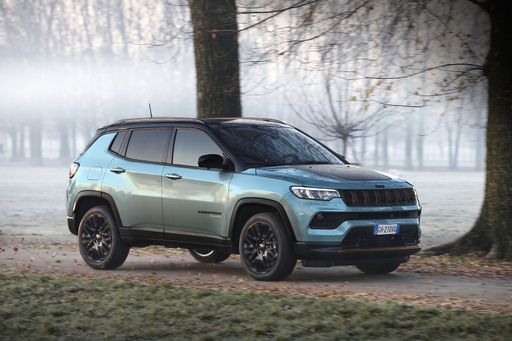 @ media.stellantis.com
@ media.stellantis.com
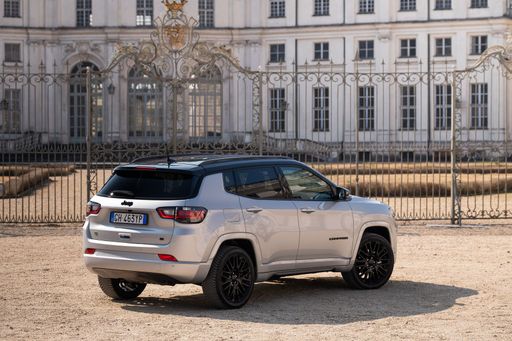 @ media.stellantis.com
@ media.stellantis.com
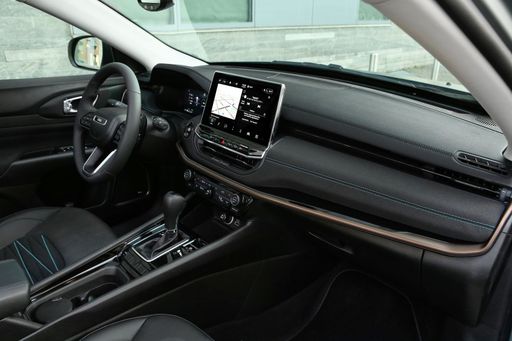 @ media.stellantis.com
@ media.stellantis.com
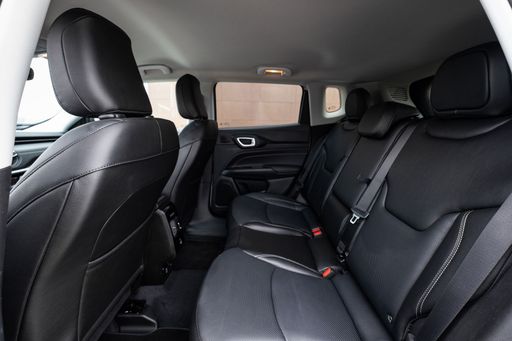 @ media.stellantis.com
@ media.stellantis.com
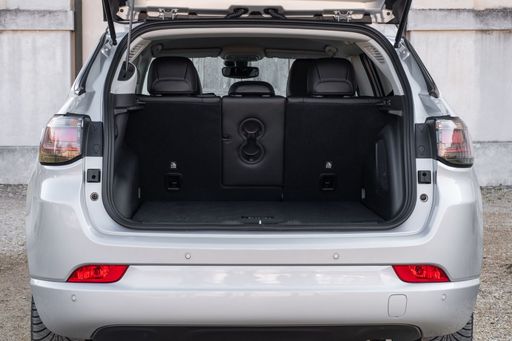 @ media.stellantis.com
@ media.stellantis.com
Peugeot 408
The Peugeot 408 captivates with its sleek and dynamic design, setting it apart in the competitive crossover market. Its interior offers a perfect blend of comfort and cutting-edge technology, creating an enjoyable driving experience. The model's efficient performance and modern features make it a compelling choice for those seeking both style and functionality in their vehicles.
details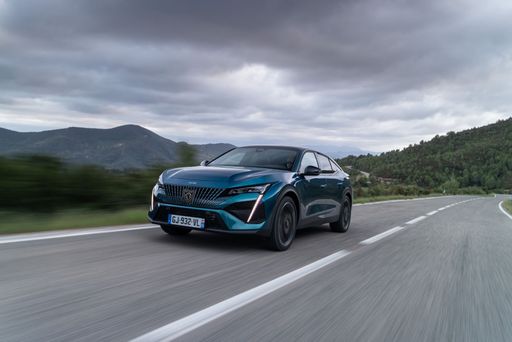 @ media.stellantis.com
@ media.stellantis.com
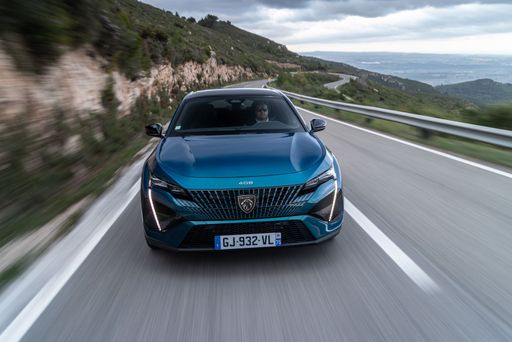 @ media.stellantis.com
@ media.stellantis.com
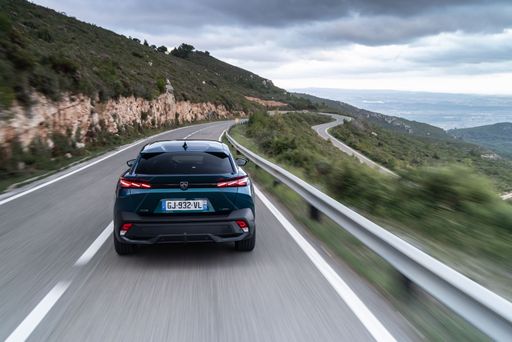 @ media.stellantis.com
@ media.stellantis.com
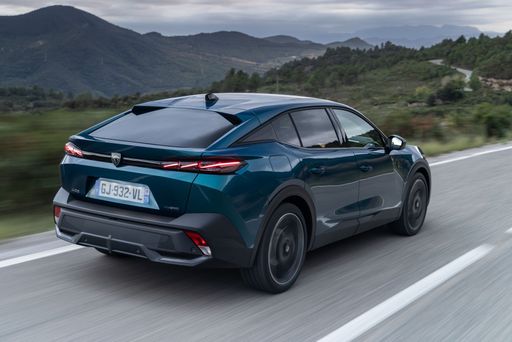 @ media.stellantis.com
@ media.stellantis.com
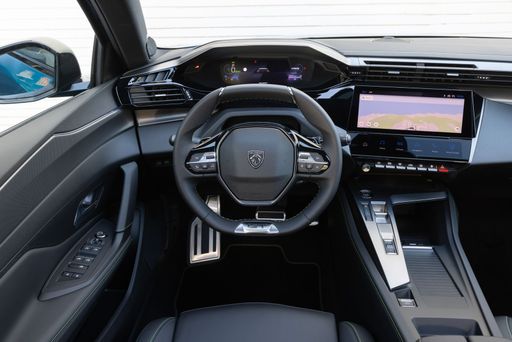 @ media.stellantis.com
@ media.stellantis.com

|

|
|
|
|
Costs and Consumption |
|
|---|---|
|
Price
34200 - 46900 £
|
Price
35100 - 44400 £
|
|
Consumption L/100km
2 - 5.9 L
|
Consumption L/100km
0.9 - 5.1 L
|
|
Consumption kWh/100km
17.50 kWh
|
Consumption kWh/100km
15.10 kWh
|
|
Electric Range
36 - 500 km
|
Electric Range
77 - 453 km
|
|
Battery Capacity
74 kWh
|
Battery Capacity
58.20 kWh
|
|
co2
0 - 133 g/km
|
co2
0 - 114 g/km
|
|
Fuel tank capacity
36 - 55 L
|
Fuel tank capacity
42 - 52 L
|
Dimensions and Body |
|
|---|---|
|
Body Type
SUV
|
Body Type
SUV
|
|
Seats
5
|
Seats
5
|
|
Doors
5
|
Doors
5
|
|
Curb weight
1575 - 2198 kg
|
Curb weight
1544 - 1879 kg
|
|
Trunk capacity
420 - 550 L
|
Trunk capacity
471 - 536 L
|
|
Length
4404 - 4552 mm
|
Length
4687 mm
|
|
Width
1819 mm
|
Width
1848 mm
|
|
Height
1629 - 1675 mm
|
Height
1478 mm
|
|
Max trunk capacity
1230 - 1387 L
|
Max trunk capacity
1528 - 1583 L
|
|
Payload
465 - 470 kg
|
Payload
371 - 456 kg
|
Engine and Performance |
|
|---|---|
|
Engine Type
Petrol MHEV, Plugin Hybrid, Electric
|
Engine Type
Electric, Petrol MHEV, Plugin Hybrid
|
|
Transmission
Automatic
|
Transmission
Automatic
|
|
Transmission Detail
Dual-Clutch Automatic, Automatic Gearbox, Reduction Gearbox
|
Transmission Detail
Dual-Clutch Automatic
|
|
Drive Type
Front-Wheel Drive, All-Wheel Drive
|
Drive Type
Front-Wheel Drive
|
|
Power HP
130 - 240 HP
|
Power HP
145 - 225 HP
|
|
Acceleration 0-100km/h
7.3 - 10.3 s
|
Acceleration 0-100km/h
7.2 - 9.4 s
|
|
Max Speed
180 - 200 km/h
|
Max Speed
160 - 233 km/h
|
|
Torque
230 - 345 Nm
|
Torque
230 - 360 Nm
|
|
Number of Cylinders
4
|
Number of Cylinders
4
|
|
Power kW
96 - 177 kW
|
Power kW
107 - 165 kW
|
|
Engine capacity
1199 - 1469 cm3
|
Engine capacity
1199 - 1598 cm3
|
General |
|
|---|---|
|
Model Year
2024 - 2025
|
Model Year
2024 - 2025
|
|
CO2 Efficiency Class
D, B, A
|
CO2 Efficiency Class
A, C, B
|
|
Brand
Jeep
|
Brand
Peugeot
|
What drivetrain options does the Jeep Compass have?
The Jeep Compass is available as Front-Wheel Drive or All-Wheel Drive.
The prices and data displayed are estimates based on German list prices and may vary by country. This information is not legally binding.
